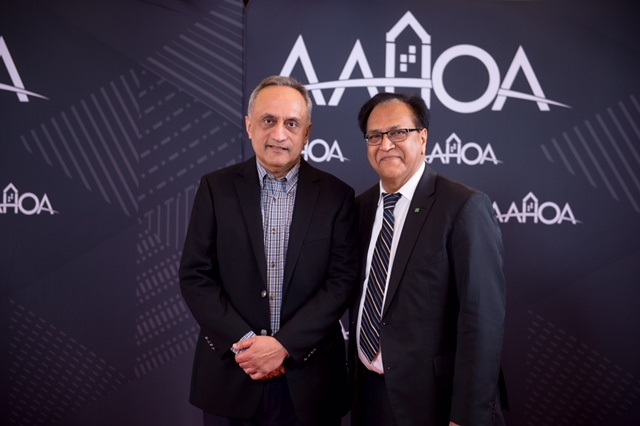by Manoj Bhargava
In my keynote address at the annual AAHOA Convention last March I spoke about how our duty, as people with wealth, is to help those who have less. I admitted that in my arrogance I thought I knew what those living in the unlucky half of the world needed. But, it wasn’t until I spent time with them that I realized what should have been obvious. Their goals in life are no different from those of anyone else on the planet: to make a living, care for their families, and have a decent life.
Unfortunately billions of people can’t achieve those primary goals because they are missing the fundamentals. They lack reliable electricity. They don’t have clean water for drinking or agriculture. Their farms are unproductive. They have health issues but can’t get treatment. These problems perpetuate the cycle of poverty and act as barriers to opportunity.
Therefore, we need a practical approach to philanthropy. After all, when you meet peoples’ basic needs for energy, water, food, and health, you enable them to pursue everything else, including higher incomes, education, nutrition, wellness, financial security, self-sufficiency, and higher living standards.
That’s the idea behind the Billions in Change movement. Billions in Change aims to bring useful inventions and better quality of life to the unlucky half of the world. Our main partner in the movement is Stage 2 Innovations, an invention shop in Farmington Hills, Michigan, which develops and manufactures useful products under the HANS™ brand to help solve problems related to energy access and water quality. Other partners in the movement include The Hans Foundation (deploying solutions in India), the Billions in Change Foundation (developing philanthropic partnerships to grow the impact of the movement), and tens of thousands of individual supporters around the world.
Designing useful products to change the world
In my speech I mentioned some of the inventions we’ve been working on:
The HANS™ PowerPack 300 is a handheld portable power station that contains built-in lights, a USB port, and an outlet for plugging in small electronics, like a radio or fan. The device uses a lithium-ion battery and can be charged with its built-in 4.5-Watt solar panel, by plugging it into a wall socket, or by using the HANS™ Solar BriefCase 60, which is another Stage 2 invention.
The HANS™ RainMaker is a water unit for use at the village level that attaches to any type of well – even brackish water wells – and purifies up to 20,000 liters per day. It runs off just 1 kilowatt of power – equal to a hair dryer – and will be priced around 3 lakhs ($4,500). Units will be available for shipping in early-to-late fall 2018.
Shivansh Fertilizer is a method of creating free fertilizer from farm waste in just 18 days. Compared to buying expensive chemical fertilizers that ultimately poison the soil, Shivansh fertilizer results in higher yields, healthier produce, lower water requirements, and more income for farmers. Last year we tested it with about 50 farms to see how it worked. Incredibly, it was so successful that within months the technique had spread to 40,000 farms. We’ve developed instruction materials in various languages and a training program in Delhi.
A call to action
The problems we are trying to address are far bigger than any one person can solve. None of us can go at it alone and hope to have much of an impact. However, all of us can play a role.
The role we’ve carved out with Stage 2 and Billions in Change is that of toolmaker. We create tools that philanthropists and nonprofits can use to more effectively address issues of poverty, poor health, poor nutrition, dirty water, and lack of electricity. Here are some ways you can get involved:
Adopt a village: If you want to help an entire village, you’re not going to fix anything just by sending money. Instead, provide readymade tools that can address the problems directly. For example,
Free and reliable electricity from the HANS™ PowerPack enables households to make a better livelihood, gives kids enough light to do their homework after dark, and lets people get on the internet, opening up a world of knowledge and opportunity.
Clean water from the HANS™ RainMaker enables good health, which leads to lower costs and higher incomes. After all, 50 percent of hospital beds are occupied by people who are sick from dirty water.
Free, nutrient-rich Shivansh fertilizer produces higher yields and better quality produce, increasing income for farmers and enabling better health and higher living standards for families.
Buy and donate HANS™ products: Instead of giving cash to the charities you work with, make in-kind donations of HANS™ products that will directly address the issues you care about: education, health, and poverty. Your money won’t be wasted or stolen because you’re giving away something tangible. This funding strategy keeps the NGOs honest. And, you won’t be lining our pockets because we sell HANS™ products at zero profit.
Fund Shivansh fertilizer training: Arrange for farmers to receive Shivansh fertilizer instruction at our training center in Delhi, or fund the travel costs for our trainers to instruct farmers in another region of India or part of the world.
Donate to the Billions in Change Foundation: You may believe in the idea of supplying tools to combat global problems, but don’t have on-the-ground partners to make it happen. We can help. If you send funds to the Billions in Change Foundation we will use your money to make both in-kind donations to villages and to subsidize prices for villages or households purchasing the tools.
Final thoughts
My approach to philanthropy may be unconventional, but it works because we are addressing root causes. If the problem is sickness, we don’t look at medicine; we look at enabling health through clean water. If the problem is poverty, we look at how to improve opportunity for livelihood. If the problem is illiteracy, we look at removing the obstacles to learning. If the problem is infertile land, we look at enabling natural soil processes to improve production. We’ve seen from decades of experience that the conventional method of simply throwing money at a problem never solves it. In fact, it usually makes the problem worse. We know that relying solely on governments for solutions isn’t an option. It’s up to those of us who possess both the financial means to help and the common sense to know how to help. After all, if we don’t do it, then who will?




